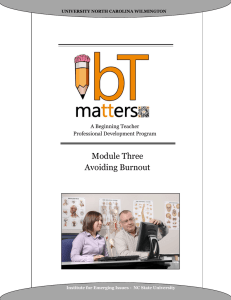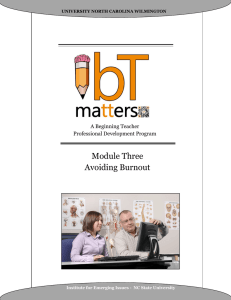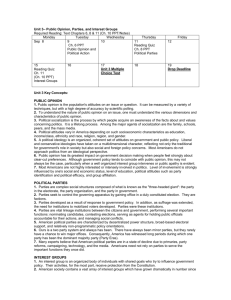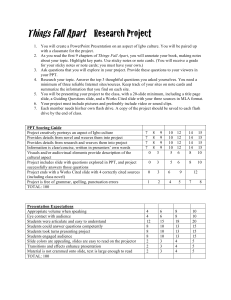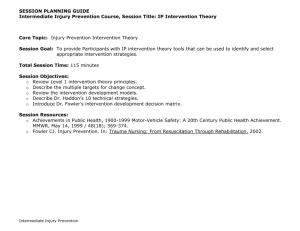Module Three Avoiding Burnout A Beginning Teacher Professional Development Program
advertisement
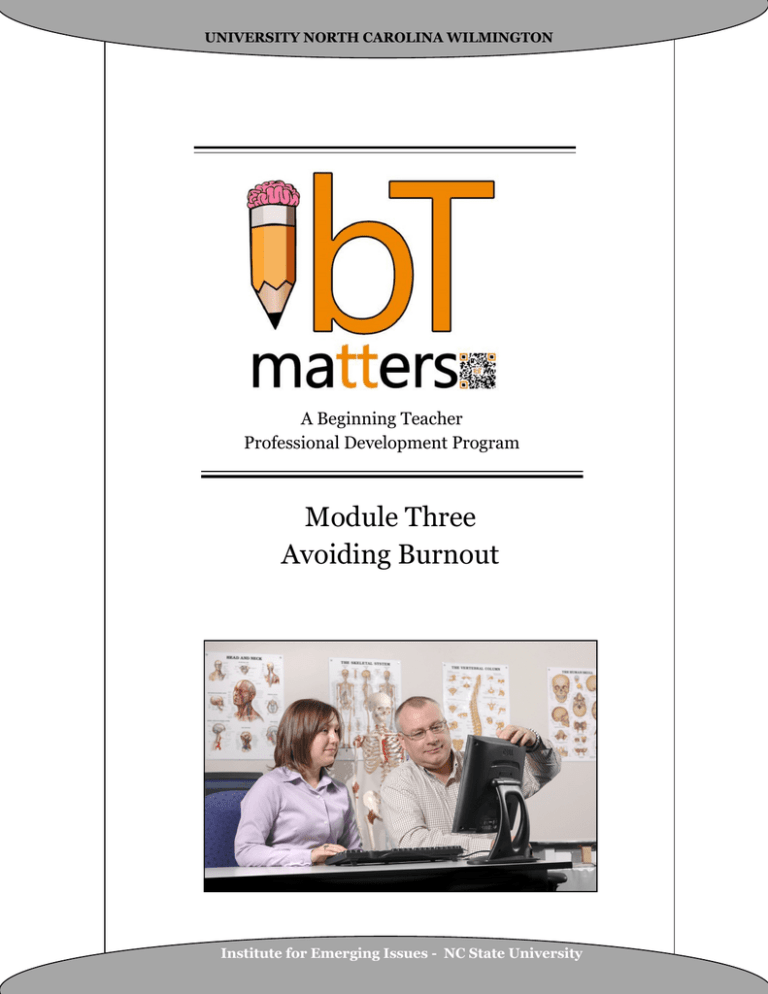
UNIVERSITY NORTH CAROLINA WILMINGTON A Beginning Teacher Professional Development Program Module Three Avoiding Burnout Institute for Emerging Issues - NC State University Module 3: Avoiding Burnout Overview: Teachers fulfill many roles in their jobs and in their own personal lives. Sometimes they can take on more than they can handle. Over time what they once could handle becomes too much. If not addressed, burnout can occur. However, as a teacher, you are not alone. You are surrounded by a network of valuable resources. People, places, media, and groups. It’s up to you to choose your own path and decide which resources work for you! Objectives for this Module: 1) Determine your current phase of teaching based on Ellen Moir’s Phases of Teacher Attitudes and match attitude to beginning teacher needs and support. 2) Examine your talents and explore a strengths-based approach to teaching and learning. 3) Develop strategies to maintain your professional focus on effective teaching and student learning when faced with obstacles. 4) Revisit teaching philosophy and identify resources (mentors, teachers, administrators, social media) who support your professional outlook. 5) Identify “professional community” resources available to support teachers to connect with their profession and each other. Facilitator Manual Module 3: Page 2 Module 3: Avoiding Burnout SECTION ONE: Welcome Overview Time: 15 minutes Objectives Covered: #2 Materials Needed: Sticky notes, markers, PPT File M3Welcome.ppt Since 1988, the New Teacher Project in Santa Cruz, California, has been working to support new teachers across the country. Through the research of Ellen Moir, the Project identified the phases of beginning teachers’ attitudes towards teaching. Whether you are a first, second, or third year teacher, consider how these attitudes apply to you throughout the school year, or perhaps, throughout the week! Take a moment to read the article below and review the chart provided. In your face-to-face meeting, you will be asked to self-identify your phase at this point in the school year. Read the article Phases of Teaching - Individually , or summarize it. -Interesting Quote"Focus on strengths and manage your weaknesses.” This is one goal of the strengths-based approach to teaching and learning. Is your classroom a strengths-based environment? Do you focus on your own talents as a teacher? Take a second and think if you see your classroom from your strengths or your weaknesses? Facilitator Manual Module 3: Page 3 Module 3: Avoiding Burnout SECTION ONE: Welcome Overview Time: 15 minutes Objectives Covered: #2 Materials Needed: Sticky notes, markers, PPT File M3Welcome.ppt Since 1988, the New Teacher Project in Santa Cruz, California, has been working to support new teachers across the country. Through the research of Ellen Moir, the Project identified the phases of beginning teachers’ attitudes towards teaching. Whether you are a first, second, or third year teacher, consider how these attitudes apply to you throughout the school year, or perhaps, throughout the week! Take a moment to read the article below and review the chart provided. In your face-to-face meeting, you will be asked to self-identify your phase at this point in the school year. Read the article Phases of Teaching - Individually , or summarize it. -Interesting Quote"Focus on strengths and manage your weaknesses.” This is one goal of the strengths-based approach to teaching and learning. Is your classroom a strengths-based environment? Do you focus on your own talents as a teacher? Take a second and think if you see your classroom from your strengths or your weaknesses? Facilitator Manual Module 3: Page 4 Module 3: Avoiding Burnout SECTION ONE: Welcome Overview Time: 15 minutes Objectives Covered: #2 Materials Needed: Sticky notes, markers, PPT File M3Welcome.ppt Activity 1 = Welcome/Give and Take Welcome Pulse Check: You are each other’s best resources. Upon entry, participants post one strength on one color sticky note, along with their name and email address on the back and post. On a second sticky note of a different color, participants write an area of their teaching that could benefit from change. They include their name and email address on the back and post in a second grouping. Show PowerPoint file (M3-Welcome.ppt, Slide 2). Facilitator Manual Module 3: Page 5 Module 3: Avoiding Burnout Notes Facilitator Manual Module 3: Page 6
